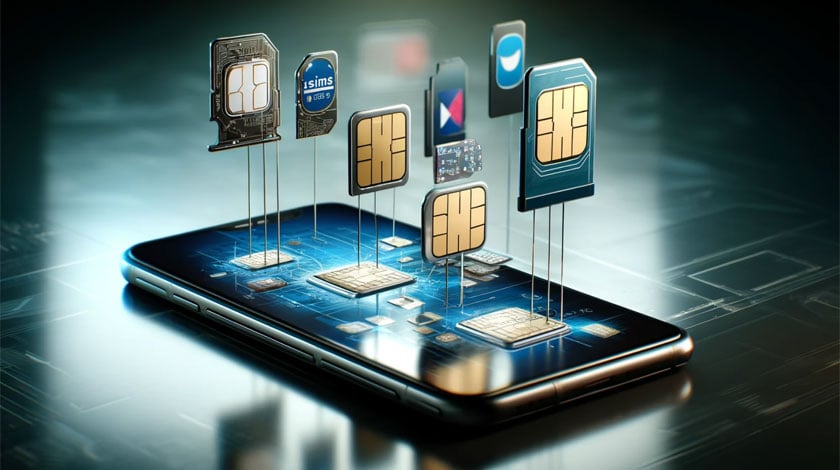Top IoT Development Tools and Technologies in 2022
Today, the expansion of the Internet of Things (IoT) has enabled the connection of more devices to different applications, sensors, and other IoT components. According to Forbes, the introduction of smart IoT solutions has made automation a reality at home and in businesses. IoT app developers have continued to enhance IoT open source dashboard to suit the ever-changing use cases.
Following this growth, the worldwide expenditure on tools for IoT reached the mark of $749 billion in 2020. The figure is anticipated to increase further to $1,100 billion by 2023. These figures clearly indicate the increasing interest in Internet of Things solutions providers. Also, people increasingly understand the benefits IoT development services bring to their lives. These benefits include improved security, fast access to information, among others. In this post, you’ll learn about top Internet of Things development tools and technologies that will trend in 2022.
IoT Architecture
IoT architecture can be categorized into a four-phase process where information transmits from sensors connected to “things” via a network. Then, the information is relayed to the cloud or an organizational data center for analysis, processing and storage. The four layers in the architecture include:
- The Sensing Layer: This architectural layer consists of sensors, actuators, and gadgets. The purpose of sensors/actuators is to receive data, process it and transmit results via the network.
- The Network Layer: This phase consists of Data Acquisition System (DAS) and the Internet gateways. DAS is responsible for data collection and conversion from analog to digital data. Internet/network gateways are responsible for data filtration and malware protection.
- Data Processing Layer: This happens to be the processing layer of the IoT architecture. This is where incoming data is analysed and processed using edge analytics prior to transmission to the data center.
- Application Layer: This layer is the last in the IoT architecture. It is where the analysed, and processed data is managed and utilized by end-user apps.
Benefits of IoT tools and technologies
- Enhances workers’ productivity and minimizes the need for human labor in companies.
- Promotes cost-effective business operations.
- Optimizes the utilization of corporate resources.
- Enhances safety at the workplace.
- Creates new business opportunities for companies implementing it.
- Enhances monitoring and decision-making in businesses.
Top Internet of Things Technologies Expected to Trend in 2022
AI and Ml
As the technological world keeps changing, so are the technologies used in the day-to-day decision-making processes. Thus, open source IoT platform appliances will become more independent in 2022 in how they help people make decisions. These devices will be able to comprehend clients’ needs and adapt to circumstances through artificial intelligence (AI) and machine learning (ML). For instance, today, you can find intelligent self-driving vehicles and inventory-monitoring robots.
Blockchain
Blockchain is a cloud IoT platform that allows the distribution of information over several units. This makes it impractical to erase or alter a single piece of valuable data. For build custom IoT applications, this strategy implies enhanced safety and safeguarding of sensitive data. Additionally, in 2022, blockchain technology will assist things to operate in more controlled circumstances, free from downtime and freezes intrinsic within normal data storage.
Edge Analytics
Edge analytics is a technique that enables businesses to gather information directly from a gadget at the edge of the organizational network. Once the information is collected using this technology, it’s then sent into the cloud. Also, this technique can enable businesses to minimize information transfer and isolate information that requires to be kept externally or locally. Edge analytics is an IoT product platform that assists businesses in increasing their gadgets’ speed and reacting quickly to possible failures. For instance, if sensors identify a product crash, they can automatically disengage the gadget and report the case to the producer.
Cloud Computing
Cloud computing has become a must-have element of IoT technology for most companies. It assists in quickly establishing the necessary infrastructure for the completion of an IoT project. With the help of cloud computing, your business can save cash and time when establishing local infrastructure and allows for scaling as a project advances and evolves. Microsoft Azure and AWS are the best cloud computing platforms you can use in 2022.
IoT platforms
The following is a list of IoT platforms to watch out for, which will trend in 2022:
- Google Cloud IoT: This platform enables users to collect and handle data from gadgets. Its key features include real-time data analysis, AI and ML capabilities, and location tracking.
- IBM Watson IoT Platform: The platform enables the data collection from equipment, things, and automobiles. Main features include data ingestion from any source and inbuilt monitoring dashboards.
- Oracle IoT Platform: This platform is available as a Platform as a Service (PaaS) for linking gadgets to the cloud. Its features include integration with corporate applications, real-time analysis capability, and automatic information synchronization.
- IRI Voracity Platform: The platform leverages two engines, Hadoop and IRI CoSort, in processing Big Data. Key features include a DB Ops Environment, a data governance portal, and a quick ETL and analytic option.
- Particle IoT Platform: This platform provides IoT edge-to-cloud connectivity and hardware solutions. Key features include a firewall safeguarded cloud and the ability to integrate with third-party apps through REST API.
- OpenRemote: This is an open-source platform that facilitates the building of various types of apps. Key features include a dashboard for monitoring, automating, and controlling your apps, in addition to having mobile apps for iOS and Android.
Key Internet of Things development tools
Tessel 2
Tessel 2 happens to be among the most popular development tools utilized for building basic IoT solutions and prototypes. This tool is useful in many ways as its multiple modules and sensors have numerous applications. Also, the tool comes with a plug and play module with USB modules, high-end hardware APIs, 10-pin modules, and community-developed modules. It provides a board that is capable of holding several modules that integrate GPS, RFID, camera, and accelerator.
Arduino
Arduino is a leading IoT software development company headquartered in Italy and is popular in manufacturing interactive kits and microcontroller boards. Arduino has developed several platforms, including a fully optimized Internet of Things Arduino and python internet of things platform that interlinks different hardware systems. This IoT app development platform offers a complete package containing several key examples and libraries, thus supporting high-quality software development projects. Additionally, this IoT development tool is easy to use by even novice developers.
Eclipse IoT
Eclipse IoT can be described as an ecosystem of industry and academia objects collaborating to build a base for IoT dependent entirely on open-source approaches. Their concentration is on aspects that aid in creating open-source executions of IoT technologies.
Kinoma
Kinoma is an IoT platform development tool that facilitates two kinds of projects. Kinoma needed only two prototypes to accomplish its objectives: Create and Element boards. In simple terms, Kinoma Create is a programmable hardware kit that leverages JavaScript to create a link with sensors and a design of IoT-linked gadgets. The set can fully support basic IoT devices, including a Speaker, microphone, BLE (Bluetooth Low Energy), Integrated WiFi, and touchscreen.
M2M Labs Mainspring
This tool is an application prototype for creating equipment-to-equipment apps such as device remote monitoring or car tracking. Usually, a remote gadget fitted with sensors and actors connects to a server app operating the machine communication protocol. In a nutshell, M2M Labs Mainspring handles machine communication, data storage, and configuration to allow developers to concentrate on only business logic.
Node-Red
Node-RED is originally IBM’s visual programming development tool for linking together hardware gadgets, online-based services, and APIs as IoT components. The tool offers an online browser-dependent flow editor utilized in building JavaScript elements.
OpenSCADA
OpenSCADA is an open source IoT cloud platform that is popular for its high security, adaptability, and modern design. This IoT development tool supports debugging and editing and comes with several features, including back-end apps, configuration tools, libraries, front-end applications, and interface apps. Similar to other development tools, OpenSCADA supports multiple programming languages and contains sub-projects such as Orilla, Utgard, and Atlantis.
6. Conclusion
Today, nearly everything is internet-enabled, and people can access all they need at the touch of the button! LinkedIn indicates that this is due to the emergence of IoT app development partners and collaboration to create new solutions through IoT technology. Ultimately, with the advancement in mobile app development and increased awareness of IoT technologies, IoT is expected to advance even further in 2022.



